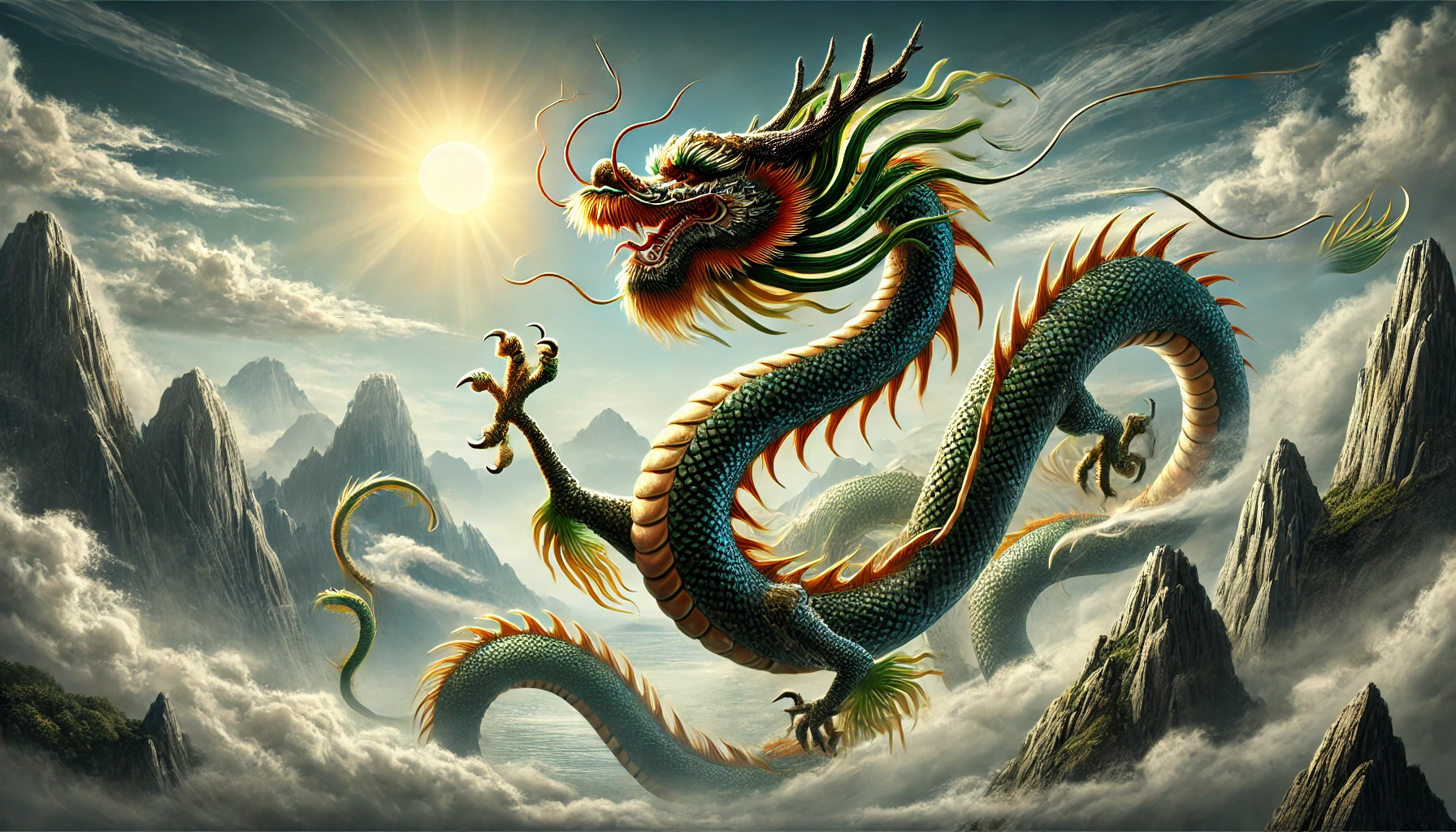Long (Lung), the Dragon of Chinese Mythology: Symbol of Power, Wisdom, and Prosperity

Long (Lung), the Dragon of Chinese Mythology: Symbol of Power, Wisdom, and Prosperity
In the rich tapestry of Chinese mythology, few figures are as iconic as Long (or Lung), the revered dragon. Far from being a mere mythical beast, Long is a symbol of great significance that weaves together ancient beliefs, cosmological principles, and cultural values. The Chinese dragon is distinct from its Western counterpart, often portrayed as a benevolent force associated with power, prosperity, and wisdom. Let’s explore the origins, symbolism, and lasting influence of Long in Chinese culture.
Origins and Historical Significance
The dragon (Long) has ancient roots in Chinese history, with depictions of dragon-like creatures appearing on artifacts as early as 5,000 years ago. Over the centuries, Long has come to embody the spirit of the Chinese people, as seen in the well-known saying, “Descendants of the Dragon,” referring to Chinese heritage. Long’s form and characteristics have evolved, merging mythology, folklore, and philosophy into one majestic creature.
Traditionally, Long is a composite being with parts taken from various animals: the body of a serpent, the antlers of a deer, the claws of an eagle, the scales of a fish, and the face of a camel. Unlike Western dragons, which are often associated with destruction, the Chinese dragon is seen as a symbol of auspicious power, capable of controlling water, rainfall, and floods. The connection between Long and the natural elements further underscores its vital role as a bringer of balance and harmony.
Symbolism of Long
- Power and Authority: In ancient China, emperors were considered the direct descendants of Long. The dragon was their emblem of absolute power, and it was believed they held the divine mandate to rule, known as the Mandate of Heaven. This connection to authority is reflected in the imperial throne, often called the Dragon Throne. Long is seen not just as a political symbol, but also as a cosmic ruler that governs the forces of the universe.
- Wisdom and Knowledge: Long is a creature of immense intelligence and is often depicted in Chinese lore as possessing deep wisdom. It is linked to the pursuit of knowledge, the development of human potential, and the fostering of enlightenment. Scholars and intellectuals, much like the dragon, seek to bring balance and order to their work, thus embodying the dragon’s qualities of wisdom.
- Prosperity and Fortune: Beyond power and wisdom, Long is also associated with prosperity and good fortune. Dragons are said to bring wealth, and their presence in art and festivals is meant to attract abundance. Long’s ability to control water and weather ties into agricultural success, which historically formed the backbone of China’s wealth. Rain-bringing dragons were seen as essential to ensuring good harvests and, by extension, societal prosperity.
- Spiritual Guardianship: Long is also a guardian of spiritual realms. Temples and sacred spaces are often adorned with dragon imagery to invoke their protection against evil spirits and misfortune. In Chinese cosmology, dragons are believed to dwell in heavenly realms, oceans, and mountains, thus protecting the boundaries between worlds and maintaining balance.
The Four Dragon Kings
In Chinese mythology, the seas are ruled by four Dragon Kings, each responsible for one of the cardinal directions and their respective seas: the East, South, West, and North Seas. These Dragon Kings are seen as powerful rulers who govern water and weather, often controlling rain for the benefit of agriculture and the people. Appeasing these Dragon Kings through rituals and offerings was an important aspect of maintaining harmony with nature.
The Dragon in Festivals and Art
Long holds a prominent place in Chinese cultural traditions, particularly during the Chinese New Year and the Dragon Boat Festival. The Dragon Dance, performed during celebrations, is a symbol of bringing good luck and fortune. Large, colorful dragon puppets are paraded through the streets, symbolizing Long’s role in ushering in prosperity for the coming year.
Dragon imagery is pervasive in Chinese art and architecture. You can find Long carved into stone, painted on silk, and depicted in intricate porcelain works. Dragons also adorn the rooftops of temples and palaces, serving both decorative and protective purposes. The aesthetic of the Chinese dragon is fluid and dynamic, embodying movement, change, and the harmonious flow of energy, known as qi.
Long in the Modern World
Even today, the dragon remains a powerful cultural symbol for Chinese people around the world. In modern China, the dragon is often associated with national pride, appearing on flags, coins, and public monuments. It has transcended its mythological origins to become a unifying symbol of heritage and identity.
As China grows as a global power, the dragon is once again coming to symbolize the nation’s strength, resilience, and wisdom. The figure of Long continues to inspire and evoke a sense of cultural continuity, connecting the present to a storied past.
Conclusion
Long, the dragon of Chinese mythology, is far more than a mythical creature. It represents a convergence of values that have shaped Chinese culture for millennia—power, wisdom, prosperity, and spiritual guardianship. Whether seen in ancient legends or modern festivals, the dragon stands as a testament to the enduring power of myth to shape our understanding of the world.
As a symbol of harmony between humanity and nature, Long teaches us the importance of balance, wisdom, and respect for the forces beyond our control. In this way, Long’s legacy remains as relevant today as it was in ancient times, a symbol of aspiration and cosmic order in a world that continues to change.
